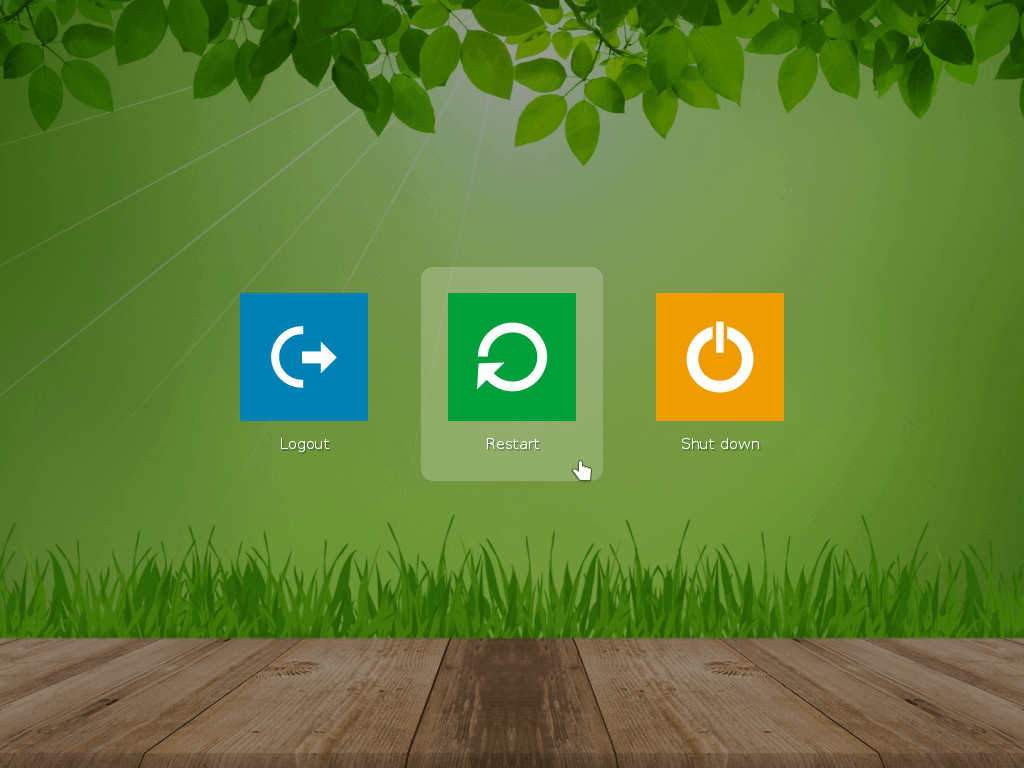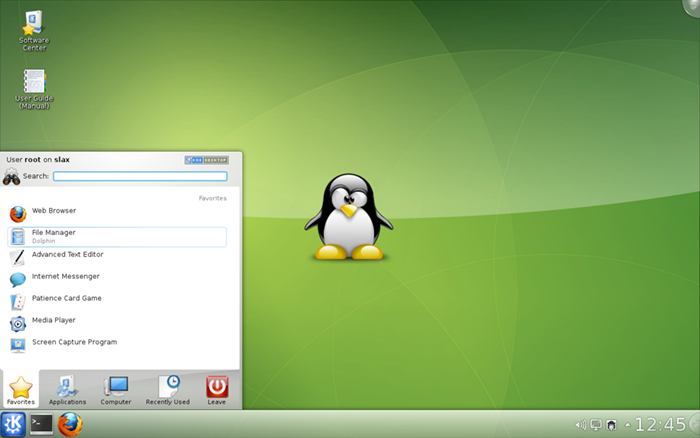How To Install Slax
| Developer | Tomáš Matějíček |
|---|---|
| OS family | Unix-like |
| Working state | Current |
| Source model | Open source |
| Latest release | 9.9.1[1] / 27 June 2019; 2 months ago |
| Kernel type | Monolithic |
| License | Various |
| Official website | slax.org |
Slax is a LiveCD Linux distribution based on Debian and is being developed by Tomáš Matějíček. Packages can be added by apt package manager or can be prepared as modules. The tagline for Slax refers to itself as 'your pocket operating system'.
Install SLAX 6 to hardisk. To install SLAX 6 on your hard drive is actually very easy as w. ndows, but there are some things you have to prepare in advance: Then follow the step-step to install on your hard drive SLAX 6 below: Boot your computer with 6 SLAX LiveCD. There will be a display menu, select the top. Now that you are running slax you can go to the slax repositories and download some programs. When they are done downloading, install them by dubble clicking on the.lzm file. Congratulations you linux user you. Now we can slowly PWN windows and the BSOD.
- 2Versions
Features[edit]
One of the main benefits of the Slax distribution is its ease of customization. Additional software can be added and removed, using Slax modules. A traditional package manager such as Debian's APT is not required to load additional software; Slax modules are completely self-contained. However, APT is fully supported. Users can also modify the default CD image or USB drive installation to customize the packages available in the distribution on boot. Slax also allows Debian packages to be converted into Slax modules.
Slax modules are compressed read-only SquashFSfile system images that are compressed with a LZMA compressor. The various modules are stacked together to build the complete Slax root directory. A supplemental writable layer (a tmpfs file system) is put on the top of the stack to implement the write functionality.
The stackable file system of choice changed between Slax versions 5 (UnionFS) and 6 (aufs), as did the module file name extension (changed from .mo to .sb).
Versions[edit]
The Slax releases before Slax 3 were known as 'Slackware-Live'.[2]
The latest version of Slax is 9.9.1.[1]
Slax 5[edit]
There were five editions of Slax 5:
- Slax Standard was the standard edition for normal personal use.
- Slax KillBill included Wine, DOSBox and QEMU to run DOS and Microsoft Windows applications.
- Slax Server supplied additional Internet functionality and came with pre-configured DNS, DHCP, Samba, HTTP, FTP, MySQL, SMTP, POP3, IMAP and SSH servers and several other server applications.
- Slax Popcorn was a minimalistic edition focused on browsing and multimedia playback. It featured Mozilla Firefox as the default web browser and the lightweight Xfce as a desktop environment instead of KDE.
- Slax Frodo was a 'bare bones' edition, providing only a full-featured text-only environment, particularly focused on computers with small amounts of RAM.
The FluxboxWindow Manager was an option in all editions except Frodo.[3][4][5][6]
Slax 6[edit]
Slax 6 is offered in a single version and completely relies on modules (additional packages) for extra features. From version 6, modules are based on LZMA compression, but some compatibility was initially provided between the obsolete .mo modules used by Slax version 5 and the more recent .lzm modules of version 6. As there have been some changes between Linux kernel versions during sub-version releases of Slax 6, however, the .mo modules of Slax 5 are now considered obsolete. Each module or package should be compiled for compatibility with the Linux kernel currently in use.[7][8]
Slax 7[edit]
Slax version 7 was announced on the developer's blog (which has now been integrated into a newly refreshed Slax website). Slax 7 supports both 64-bit and 32-bit architectures, and according to its download page, 'is available in more than 50 languages'. It also features a stripped down version of KDE 4, a new wallpaper, and a new module system.[9][10]

Slax 9[edit]
In November 2017, the developer announced the release of version 9. This latest edition is heavily rewritten and is based on Debian, and relies on APT to add packages. The default builds (both 32-bit and 64-bit) contain Fluxbox window manager with a terminal, Chromium web browser, LeafPad text editor, calculator, pcmanfm file manager, and wicd network manager.[11][12]
See also[edit]
References[edit]
- ^ ab'Slax 9.9.1 released'. 27 June 2019. Retrieved 8 July 2019.
- ^'Slax - News'. DistroWatch. Retrieved 2010-01-31.
- ^Review: Slax 5.0.6 Linux.com The source of Linux information
- ^Slax 5.1.4 - Your Pocket OS Tux Machines
- ^Mini-Review of A mini slack Tux Machines
- ^Featured distribution of the week: SLAX, DistroWatch Weekly
- ^SLAX Linux - Your pocket operating system - Review, Dedoimedo
- ^Latest Slax release needs more time in the oven Linux.com The source of Linux information
- ^After three years, Slax Linux is reborn with version 7.0 PCWorld
- ^Everyday Linux User Review of SLAX
- ^Debian-Based Slax 9.3 Linux OS Enters Beta with Improved EXT4 and NTFS Booting, Softpedia News
- ^Slax 9.3 Is The Latest In Resurrecting This Longtime, Lightweight Linux Distribution - Phoronix
External links[edit]
| Wikimedia Commons has media related to Slax. |
- Slax at DistroWatch

- Reviews:

I am new to Linux. I have purchased a USB stick with Slax on it. I downloaded some modules and placed them in the modules folder. Can someone tell me how to run the modules, what commands do you use and where do you use them? Can you tell me how to get Breakout working, for example?
How To Install Slax
I can boot from the USB stick and get on the internet.
bertieb1 Answer
Reading through the documentation here I found that slax needs the modules 'activated'. To 'activate' a module you can perform a reboot or use the Software Center to manually activate it. The documentation also notes you can activate the module from the command line:
Afterwards, you should be able to run it like normal Linux software. If you are lucky, your desktop environment will automatically add an entry to the menu and you can click and enjoy. Otherwise, open a terminal and type the name of the software (always one word).
As for breakout working, I think you mean lbreakout2. First you will need the module that it 'requires' (the dependency) which is sdl. So you can install it from the Software Center or download it manually and place it in /slax/modules/ and do a reboot. Repeat the process with the lbreakout2 module. It should now be visible in your KDE menu. If it isn't, just type
in the command-line and enjoy!
bertieb